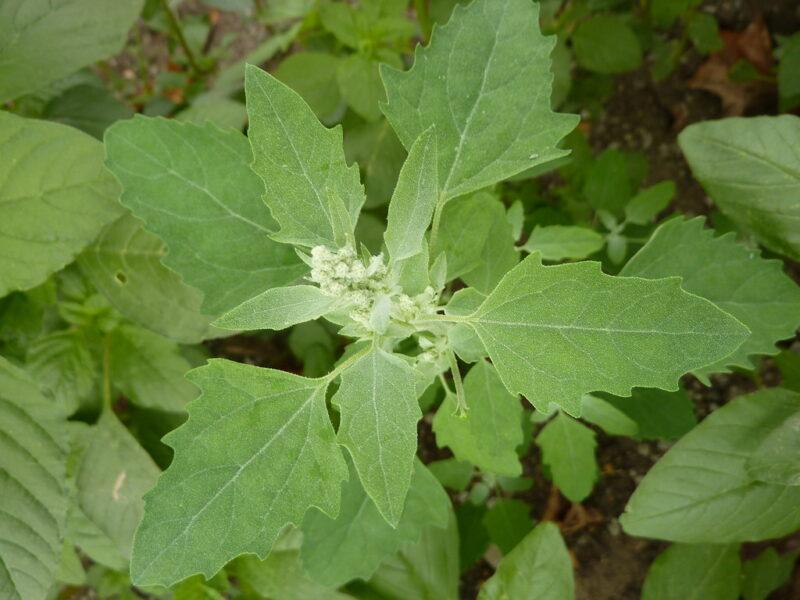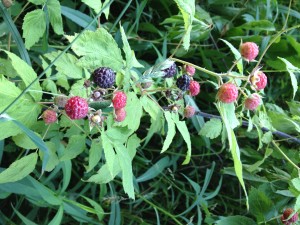
I imagine Catherine’s Foraging Journal filled with the best places to find whatever was in season.
When I was a kid, my family and I picked berries by the bucketful for Mom to make homemade jam. For breakfast the next morning, we ate a bowl of berries and a slice or two of Mom’s overnight bread. It was a treat for us and the inspiration for the breakfast at the Cathillon farm.
Raspberries and Blackberries
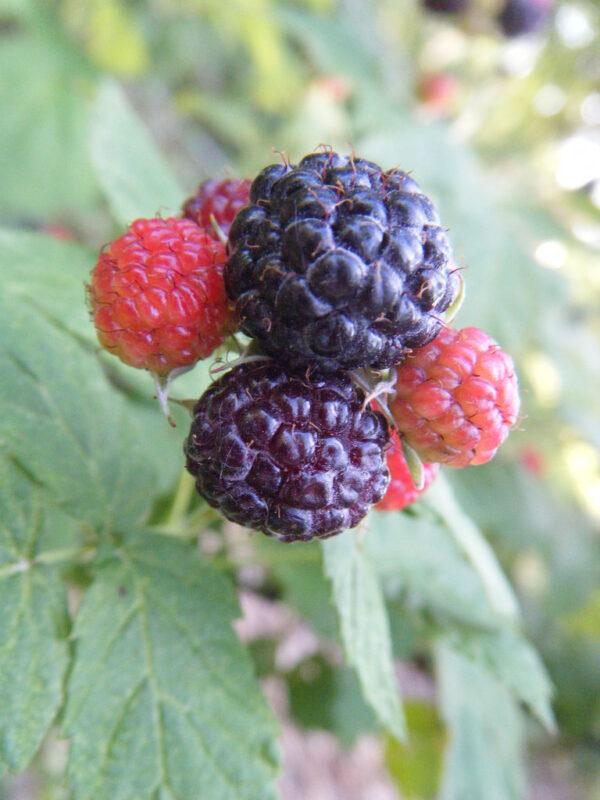
You don’t need Catherine’s Foraging Journal to tell you where to find the best berry patches. You can forage for wild berries at the edge of the woods, along the roadside, or among the tall grasses underneath overhead powerlines. Make sure to wear long pants, long-sleeved shirts, and boots because the stalks are thorny. Also, remember, humans, aren’t the only animals to eat berries. Watch out for bears and snakes.
In Western Pennsylvania, black raspberries (above) begin to ripen around July 4 and a couple of weeks later, blackberries (right) become available to harvest.
Blackberries are much bigger and have bigger seeds.
Also, please remember not to step down the green stalks without fruit. Blackberries and Raspberries are biennial. Those empty stalks will bear fruit for next year’s harvest.
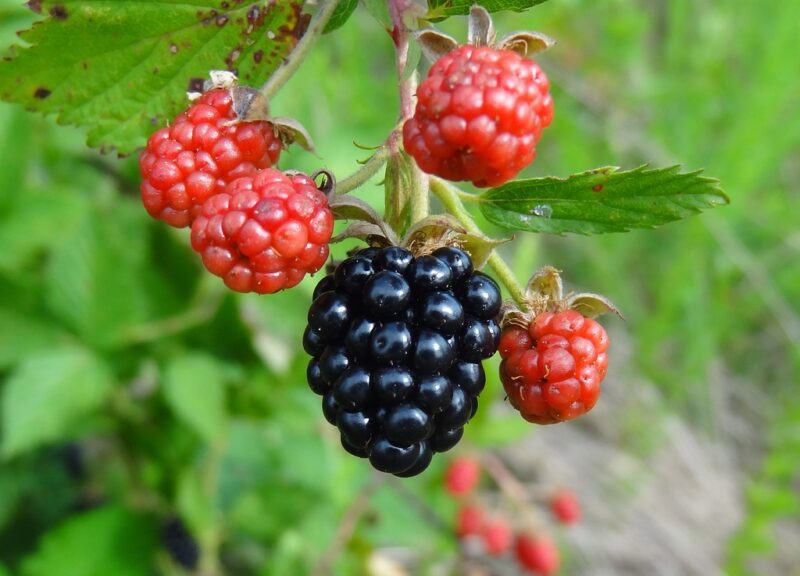
Hemp Agrimony
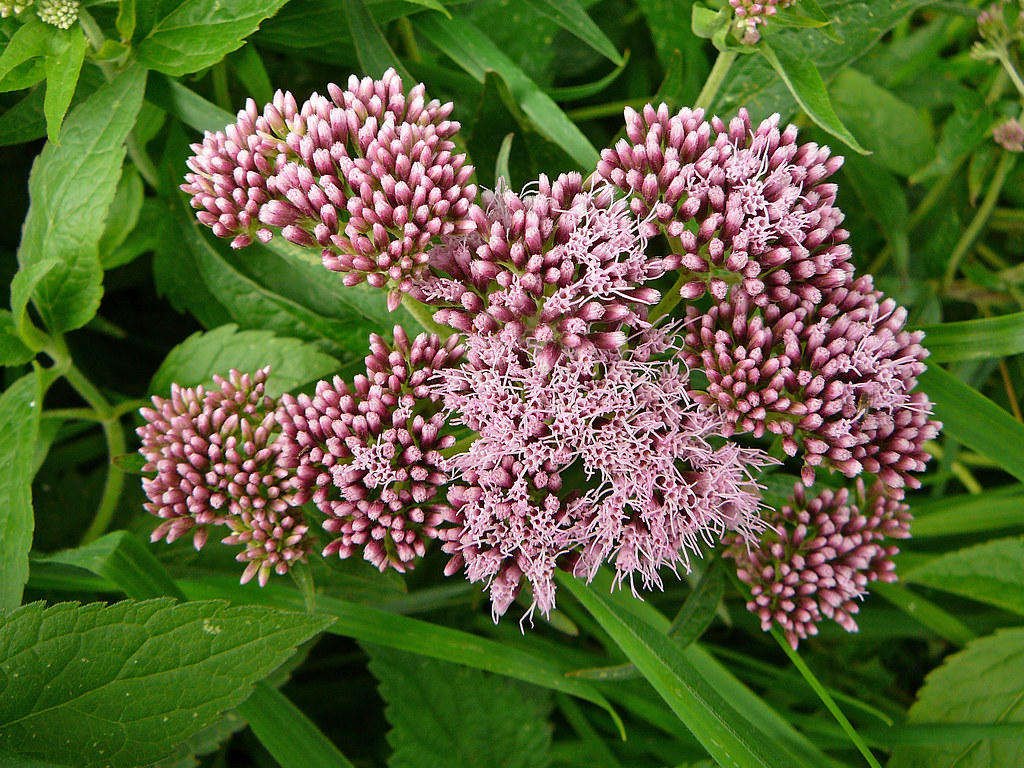
Of the myriad of species collected, Catherine relied on Hemp-Agrimony above all others, collecting the leaves and flowering tops in August before they opened and dried. Vitamin C in plants such as Hemp-Agrimony staved off scurvy and colds during the long Vosges winter without fresh fruits. For uses read more…
Wild Spinach or Lambsquarters
Prolific, abundant, and delicious, the top edible “weed” is Wild Spinach. It grows with little effort in almost any disturbed soil and is one of the most nutrient-dense plants ever analyzed. It is rich in potassium and magnesium and has more vitamins A and C, riboflavin, and calcium than domesticated spinach. Learn more…
